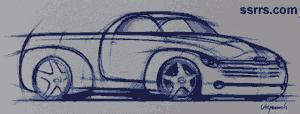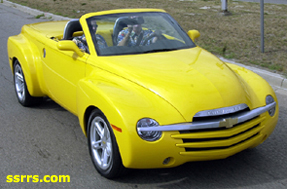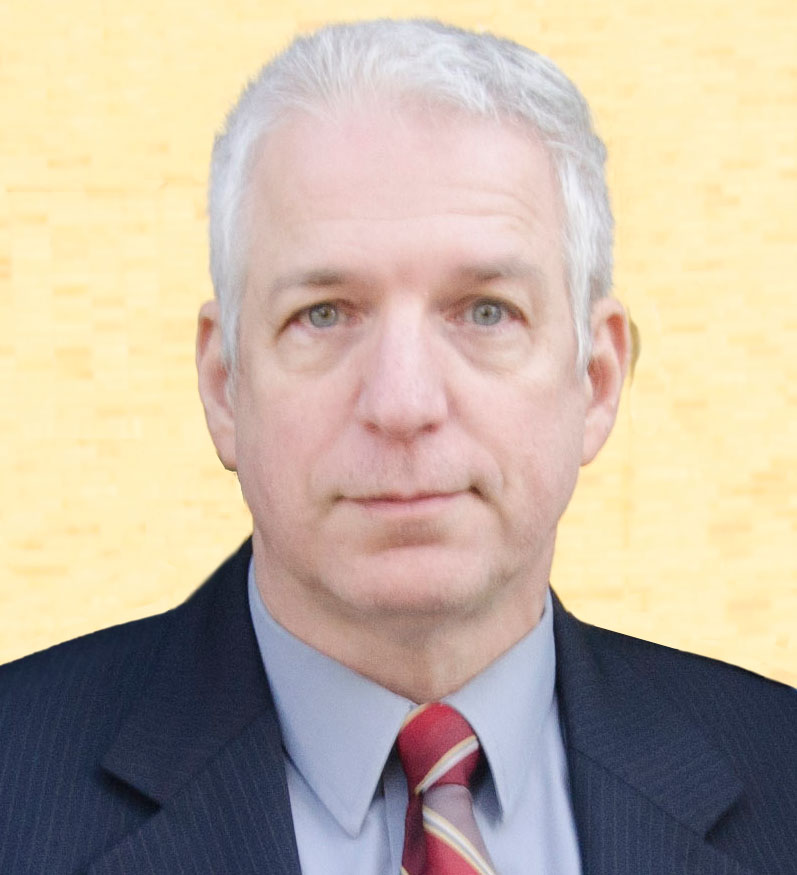
According to GM, the Chevy SSR traces its lineage to the vision of Wayne Cherry, Vice President of GM Design. The original idea was to explore how a heritage design theme might manifest itself in a truck, as opposed to cars where heritage designs abound. Working with GM Design’s Corporate Brand Character Center, which defines and executes the vision for each of GM’s global brands, Cherry immediately made the connection to Chevrolet as a perfect fit for a heritage-inspired truck.

Ed Welburn, executive director of the Brand Character Center, led the effort to develop some options as to what this heritage truck might become. In the summer of 1999, a team of young designers began rendering creative ideas.
Four options emerged. Three were inspired by various eras of Chevy pickups, the 1930s, late-40s, early 50s, and the late 50s. A fourth was a futuristic design with more subtle heritage cues. Of those original four, two were selected by Welburn to go from sketches and digital designs to full-size physical models. The two ideas were the late 40s/early-50s inspired pickup and the futuristic design, dubbed “Nostalgia 2000.” However, an idea from one of the designs not selected stuck in Welburn’s mind.

“One of the options included an open-air cab,” Welburn says. “We were intrigued by the more contemporary and fun attributes of this type of vehicle, so the idea of a pickup truck that was also a modern convertible roadster held great promise.”
The sleek, “slammed” design inspired by Chevy’s “Advanced Design” 1947-1952 pickups – with the critical addition of a retractable hardtop — gained momentum as the designs went to clay. Many other tweaks and enhancements were quickly made to hone the styling further. The team paid particular attention to the vehicle’s large flared fenders, sculpted hood and rear accented stance. The combination of heritage cues mixed with a fresh take on a roadster proved irresistible.
“The result was a form that was very car-like, contemporary and relevant to today’s customer,” Welburn says. “Also, we were able to design the vehicle in a way that enhances the current and future Chevrolet brand character, rather than simply paying homage to the past.”
In August Wayne Cherry and Tom Davis, then Vice President of the GM Truck Group, reviewed the team’s work and authorized the SSR be built for the 2000 auto show circuit. Designers developed the vehicle solely using math-based digital tools, in preparation for the January 2000 Detroit Show.
Once the SSR concept vehicle was unveiled, the reaction was instant and positive. While the press and public experienced the vehicle for the first time in the auto show circuit in the first half of 2000, GM designers were already thinking of the future.
“From the start, the SSR concept was designed to be a viable option for production,” Welburn says.
This enabled the team to move quickly when, in August of 2000, the vehicle was put in GM’s future production plan officially.
The program then moved to GM Design’s production studio, under the direction of Vehicle Chief Designer Bill Davis. The team’s marching orders were straightforward – make sure the production SSR matches the original concept as closely as possible.
The team leaders
Tom Wallace – Vehicle Line Executive, GM Midsize Trucks
From the press release: “Tom is a SCCA (Sports Car Club of America) driver, racing his GT-1 class Camaro at major amateur racing events. Racing is a family affair for the Wallace clan; his sons are often in the pits and Tom’s wife is a trained driver. In between races, Tom leads the development of GM’s midsize trucks, including the new Chevy TrailBlazer, GMC Envoy and Oldsmobile Bravada, as well as the Chevy SSR. Tom’s GM career started in engineering and has never strayed away from product. He is one of the fathers of the legendary Buick Grand National.”
In 2005, Tom Wallace became the Chevy Corvette’s chief engineer (where he stayed through 2008), and was inducted into the Corvette Hall of Fame in 2018 partly for his work on the 2009 Corvette ZR1, which hit 638 horsepower and 200 miles per hour.
His Grand National fame comes from working on the Buick turbo V6 engine; he also was chief of engineering of the Corsica and Beretta, then the Regal/Grand Prix/Intrigue, before taking a post in quality for some time. In 1995 he was assigned to herd the new midsize truck line (Blazer, Envoy, Bravada, Saab 9-7) into production, then the H3 and Colorado. After that, he was put in charge of performance cars, including the Corvette, XLR, Sky, Solstice, and Opel GT.
He was one of just two Corvette chief engineers who also raced, in his case starting in high school; Wallace also competed at the 24 Hours of Daytona, 12 Hours of Sebring, and Talladega (he won at Talladega and lasted ten hours at Daytona and nine hours at Sebring). His mechanical engineering degree came from Kettering University, his MBA from Stanford. His sons both race Camaros.
Russ Clark, SSR brand manager
“Russ was a key leader in the creation of Saturn Corporation in the mid-1980s, and in the early 1990s he lead the development of the Opel Corsa and its derivatives, including the Tigra. Russ has been with Chevrolet since 1996, first as brand manager for the Blazer and later leading the successful launch of the all-new TrailBlazer in early-2001. Away from work, Russ is an avid skier and golfer, hobbies he most often enjoys with his wife and two teenage children.”
Russ started out with Buick in 1979, and became a market analysis manager for GM in 1982. He was with Saturn from the start as the manager of sales and distribution development in 1985-88, and rose up in Saturn until the end of 1995. He then became the brand manager for the Chevy TrailBlazer; in 1999 he was promoted to become director of midsize truck marketing. In 2003 the company made him Saturn’s national sales manager, and in 2005 put him in charge of Chevy truck marketing as a whole. He took over marketing for Buick, Pontiac, and GMC in 2007; then was made the vice president of global sales and service for Hummer at just the wrong time, in 2009.
Russ ended up director of strategy and planning for accessories and performance parts when in 2014, and retired in July 2017.

David Zatz has been writing about cars and trucks since the early 1990s, including books on the Dodge Viper, classic Jeeps, and Chrysler minivans. He also writes on organizational development and business at toolpack.com and covers Mac statistics software at macstats.org. David has been quoted by the New York Times, the Daily Telegraph, the Detroit News, and USA Today.

Leave a Reply